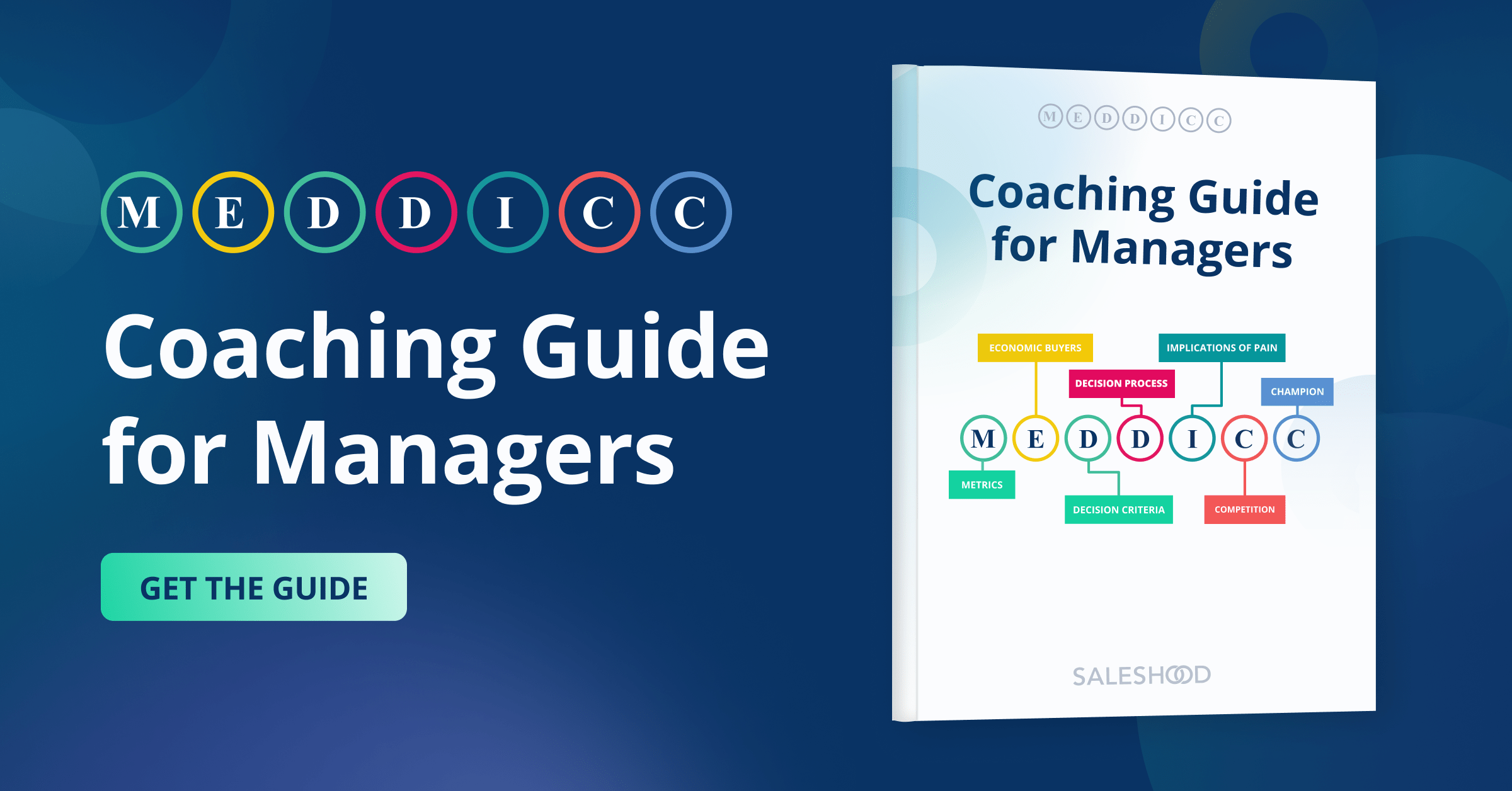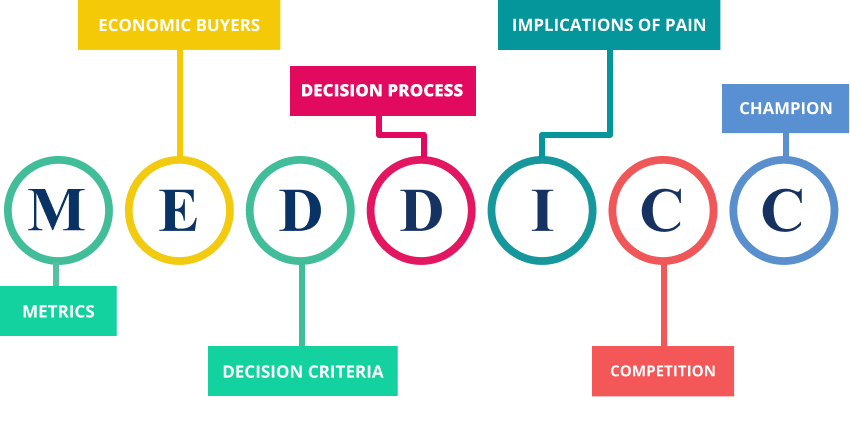In our From Strategy to Execution With a New Sales Process & Methodology webinar, Saleshood CEO Elay Cohen and Vice President of Global Revenue Enablement at Instructure, Paul Butterfield took a deep dive on all things Sales Process and Methodology related. Here’s a look at Paul’s step-by-step guide to launching a new sales methodology with your team.
5 Considerations For Implementing A New Sales Methodology And Sales Process
The sales landscape is becoming more and more competitive every day. As the business world continues to evolve, many teams are realizing it might be time to update their sales process and methodology. But how should enablement leaders structure and manage this transformation?
In this post, I’ll share my five step guide to selecting, formulating, and executing a new sales methodology with your team:
1) Developing a strategy for sales transformation
2) Choosing your sales methodology
3) Rolling out sales skills training
4) Customizing your sales systems
5) Recognizing, measuring, and correlating impact
1) Developing A Strategy For Sales Transformation
The first thing you need to recognize is that sales methodology and sales processes are not interchangeable concepts, though they are often used that way. Understanding the difference is key to making changes successfully.
A sales methodology is the approach you take to sell your products or services to customers. It’s a philosophy of selling, usually based on the way that you believe you can best reach your target audience and meet your numbers.
A sales process is a set of specific steps you execute to turn potential leads into customers. It’s every touchpoint you have, from the first point of contact to closing the deal. This is typically predefined and repeatable for every rep you bring on.
When I’m defining sales processes, I’m thinking about things like: What are the seven stages in Salesforce, and what are the gates? Methodology, on the other hand, is how we go about executing those stages and how we’re making sure we’re collecting the right customer inputs, stage by stage. We’re looking at how we’re aligning to the customer’s buying pathway, as opposed to trying to shoehorn them into our preconceived timeline.
When thinking about implementing a new sales methodology to align your team, you must also consider the global implications and select a sales methodology that not only aligns with your industry, but also your team’s expertise and background across the organization. Once you have a better understanding of where your team is starting from, you can start to solidify your strategy for tackling this transformation.
2) Choosing Your Sales Methodology
There are many different sales methodologies out there, and choosing a sales methodology is one of the most important decisions a company and their sales leaders can make to execute a successful go-to-market initiative. Selecting the best one for your organization comes down to doing your research, and asking questions that will help you understand how it will move you towards the results you want.
The methodology that we chose to implement was Selling Through Curiosity™, which is known for its ability to get results in days and weeks that would normally take months, quarters, and years for most salespeople to master. This is a methodology that I became familiar with in other roles, and when I started in my position at Instructure, I knew it was something I wanted to bring there too.
The method of questioning and being curious was something that our team would benefit from. I felt it would be a great fit for both our former educators, now working as salespeople, and their education customers. It would allow us to better understand these customers so we could handle any objections that come up and build relationships with people.
Some of the Selling Through Curiosity Curriculum includes:
-
- Discovery
- Effective Note Taking
- Decision-Making Process
- Advanced Questioning
- Mutual Plans
- Customizing Executive Presentations
- Negotiating
- Relationship-building
3) Rolling Out Your Skills Training
Upon making the decision that something needed to change in our sales methodology, we thought there might be some challenges around implementation because at the time, we were in the middle of the pandemic. That meant we couldn’t use many of the training methods that worked for us in the past and we had to look at virtual options.
However, I’m a big believer in creating an immersive experience. My concern when looking at virtual skills training, was that this type of training couldn’t be immersive, and therefore wouldn’t be as effective. I didn’t believe there was a way to offer virtual training on sales methodology that would actually make an impact. So, I wanted to go through the virtual experience as a learner, and when I did, that’s what sealed the deal. This virtual training from SalesHood was clearly something that was developed over several years, and not as a reactive response to the pandemic.
At that point, I was confident that we could use Saleshood and Selling Through Curiosity™ to help our reps gain a deeper understanding of the problems our prospects are trying to solve, and reach them at the right moment in the customer journey. We first began by rolling out the training to our sales leaders, as I knew they had to lead by example. There’s power in that, and it helps them become more effective coaches for the reps on their team.
4) Customizing Your Sales Systems
The next thing we did was look at doing some customization for our market. We had the techniques and the approaches from the sales methodology training. Now we had to take those learnings and find the best way to apply them for our audience, which consists of educators and institutions.
There are a lot of variants for us. The types of educational institutions we sell to and the titles of the personas are very different. That’s why it’s important for us to customize our approach, and train our reps on the things they need to know as they interact with those in international markets.
We also had to think about how to best use the training now that we were familiar with it. It didn’t make sense to focus our time and energy on something that our teams were already very good at—instead, we chose to focus on the areas where we needed the most help, as well as the “why” behind choosing this methodology.
One of the nice things about Saleshood is that there’s great ready-made content that we can quickly and easily use. We can also use those in combination with our own reinforcements, as well as perspectives from our own personal experiences. That is something we’re planning to do in the months ahead.
5) Recognizing, Measuring, And Correlating Impact
Another thing that’s important to me is recognizing the effort that team members put into training. Right now, when you complete the sales training in our organization, you get a hoodie with our Panda U crest on the front and the graduating year and name of the methodology on the back. This gives people something tangible for the work they did. I’m also working on a few surprises for next year because I want to explore new ways to allow people to level up.
Beyond that, it’s critical to measure the impact your sales methodology and process are having. One of the first things you can do is ask every learner that goes through the training to give their feedback on it. Then, as they begin to use what they learn in their day-to-day work, follow up. Did the training help them become more confident in their role and give them the tools to become better at their job? If so, you’re on the right track.
Next, of course, you need to look at the business impact. This may seem like an obvious step, but it’s one that can get lost as we focus on the implementation. We have to ask the questions: How is this influencing the metrics that matter? What does your win rate look like when you compare it to prior quarters? What percentage of the sales team is hitting their quota, and is that number improving over time?
Here are some metrics to measure:
-
- Pipeline Created
- Pipeline Progression
- Sales Cycle Time
- Win Rates
- Time to first deal (and time to second deal)
- Ramp Time
- Forecast Accuracy
- Attainment
- System Adoption
- Number of Activities (calls, emails, etc)
Giving members of your team the recognition they deserve, getting insight from them, and analyzing data will allow you to get the full picture. This way, you can understand the true value of your new methodology and process.
Walking The Path From Sales Strategy To Execution
Choosing a new sales methodology, implementing it, and adjusting your sales process can move you closer to your goals, but you need to take a thoughtful approach to every step along the way. Here’s what you need to look out for as you work through these two concepts in your organization.
First, research sales methodologies and look at the “why” behind them, so you can choose the one that aligns with the way you do business. Then, roll out your sales training in a way that will allow every learner to engage, and ensure that you’re giving everyone the information they need to be successful and feel accomplished.
Finally, remember to measure your success and look for ways that your new methodology is creating an impact. Figure out how the training and implementation actually connect with the results you’re seeing. This will make it possible for you to double down on what’s working and find opportunities for improvement.
More sales strategy and process resources
Sales Methodology Guide: 18 Popular Methodologies
Sales Process: Critical Elements, Structure & Tips on How To Build One For Your Business
How To Get Your Sales Process Truly Adopted



